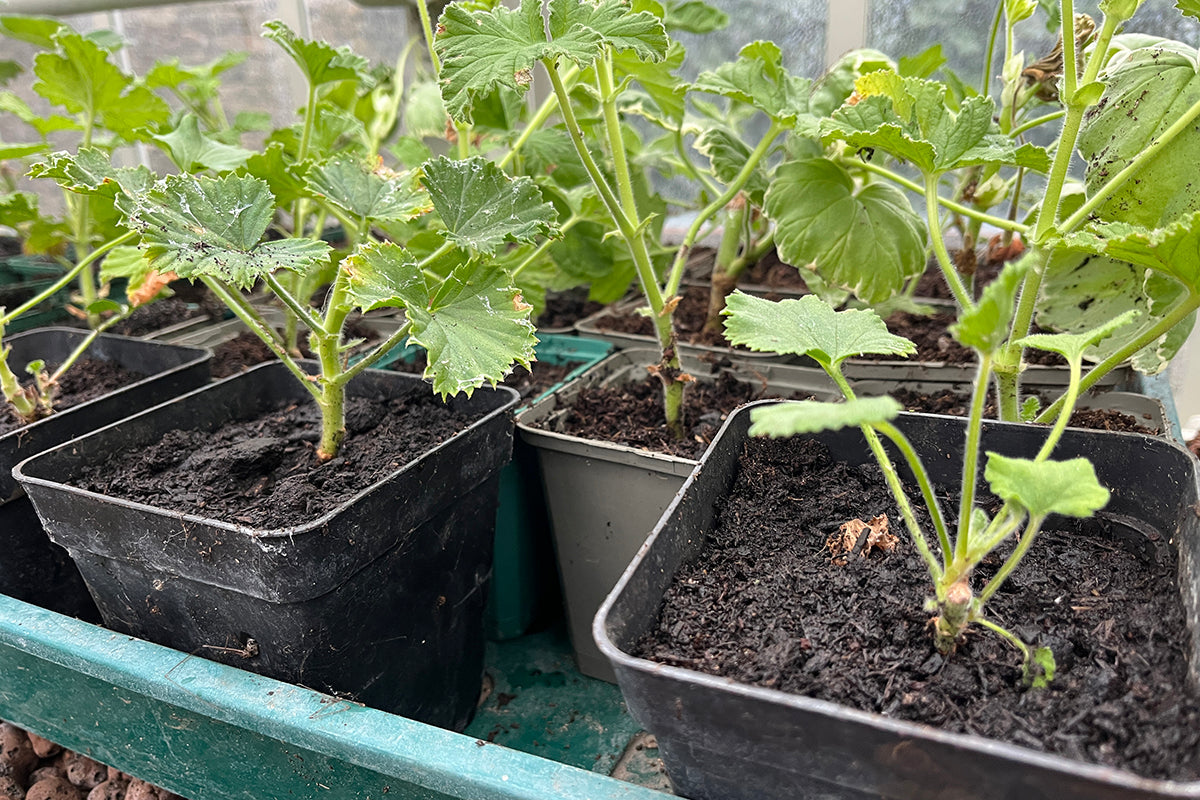Gardeners' notes - What to do in February

Pot on pelargonium cuttings
We’ve had a lot of success with our pelargonium cuttings this year. Taken in October and placed in a heated propagation unit we’ve had a 99% success rate. Now all rooted in their large communal pots it's time for them to be sent out into the world and put into individual 9cm pots. A general purpose compost is ideal and grit can be added if you have some.
Gently separate each rooted cutting from its neighbour and pot up at the same level in its new lodgings. Water, and then keep in a frost free location - maybe a heated greenhouse or a cool conservatory - with plenty of light. Don't overwater, this can lead to the roots rotting. We let ours go almost dry before watering again. They will continue to grow and be ready to plant out when the possibility of any frost has passed - usually around mid May.
Tree Stakes
New trees are usually planted with plenty of enthusiasm and planting instructions, followed to the book. The problem is that, from that moment onwards, they are often forgotten. We’ve lost count of the number of trees we’ve seen with the tree-ties creating a restricted area of growth, digging into the ever expanding bark, or in extreme circumstances, irretrievable and completely engulfed by the growing tree.
Our advice is to spend time twice a year, now is a good time, checking on trees in your garden and their various methods of support. Is the tree-tie too tight? Has it become too loose? Has it broken? Is the stake still offering any support? Is the stake rotten at ground level? Finally, is the stake even required any longer? After three, or certainly four years, a strong root system should have been created and it may be time for the unattractive support system to go.
Forcing rhubarb
Rhubarb grows well in the UK climate and an early crop is always welcome into the kitchen. Producton of early stems can be encouraged and this fresh new growth can be made particularly tender and sweet by growing them in darkness. The traditional way is to use a rhubarb forcer made specifically for this purpose. It's usually a tall hand-thrown earthenware pot, open at the base, with a smaller lidded opening at the top enabling regular inspections to check on progress. Second-hand rhubarb forcers can often be found in bric-a-brac shops and new ones can be purchased from a number of pot suppliers and potteries.
With imagination and ingenuity alternatives can be found. Old upturned dustbins in plastic or metal, chimney pots, or unused waterbutts can be put into action. Check the rhubarb for slugs and snails and then place the forcer over the clump. Only carry this out on established older rhubarb plants, as it can exhaust younger specimens.
After six weeks or so you should be able to start picking. The time and outcome will depend on the temperature and weather conditions. To combat unpredictable weather our Victorian predecessors would have piled fresh horse manure around the forcer to create extra heat and therefore an earlier crop.
Once you’ve taken a crop, remove the forcer and let the plant recover. Don’t pick anymore from that clump for the rest of the year and apply a mulch of compost or well rotted manure. The following year, force a different clump if you have one. Dont force the same clump two years in succession.







